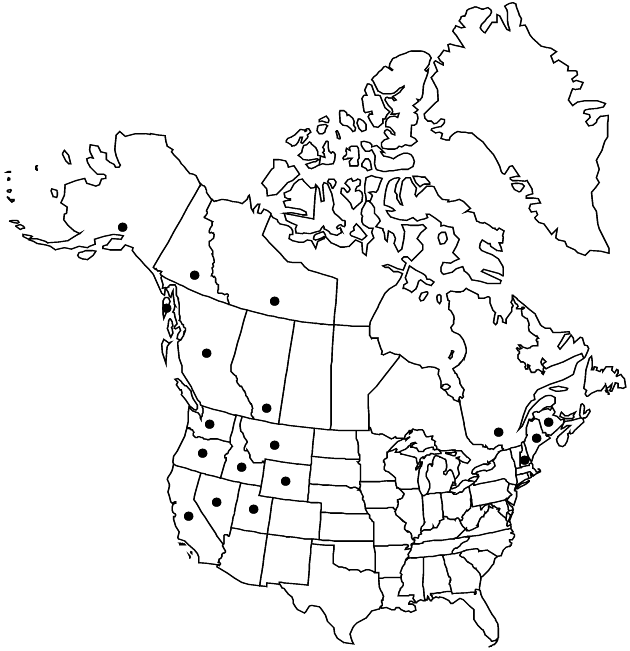Difference between revisions of "Arnica lanceolata"
Trans. Amer. Philos. Soc., n. s. 7: 407. 1841.
FNA>Volume Importer |
imported>Volume Importer |
||
| Line 6: | Line 6: | ||
|place=7: 407. 1841 | |place=7: 407. 1841 | ||
|year=1841 | |year=1841 | ||
| + | }} | ||
| + | |special_status={{Treatment/ID/Special_status | ||
| + | |code=E | ||
| + | |label=Endemic | ||
}} | }} | ||
|basionyms= | |basionyms= | ||
| Line 19: | Line 23: | ||
-->{{Treatment/Body | -->{{Treatment/Body | ||
| − | |distribution= | + | |distribution=Alta.;B.C.;N.B.;N.W.T.;Que.;Yukon;Alaska;Calif.;Idaho;Maine;Mont.;N.H.;Nev.;Oreg.;Utah;Wash.;Wyo. |
|discussion=<p>Subspecies 2 (2 in the flora).</p> | |discussion=<p>Subspecies 2 (2 in the flora).</p> | ||
|tables= | |tables= | ||
| Line 49: | Line 53: | ||
|basionyms= | |basionyms= | ||
|family=Asteraceae | |family=Asteraceae | ||
| − | |distribution= | + | |distribution=Alta.;B.C.;N.B.;N.W.T.;Que.;Yukon;Alaska;Calif.;Idaho;Maine;Mont.;N.H.;Nev.;Oreg.;Utah;Wash.;Wyo. |
|reference=None | |reference=None | ||
|publication title=Trans. Amer. Philos. Soc., n. s. | |publication title=Trans. Amer. Philos. Soc., n. s. | ||
|publication year=1841 | |publication year=1841 | ||
| − | |special status= | + | |special status=Endemic |
| − | |source xml=https:// | + | |source xml=https://bibilujan@bitbucket.org/aafc-mbb/fna-data-curation.git/src/bb6b7e3a7de7d3b7888a1ad48c7fd8f5c722d8d6/coarse_grained_fna_xml/V19-20-21/V21_934.xml |
|tribe=Asteraceae tribe Heliantheae | |tribe=Asteraceae tribe Heliantheae | ||
|subtribe=Asteraceae (tribe Heliantheae) subtribe Chaenactidinae | |subtribe=Asteraceae (tribe Heliantheae) subtribe Chaenactidinae | ||
Revision as of 21:03, 27 May 2020
Plants (5–)20–80 cm. Stems solitary to densely clumped, simple or branched among heads. Leaves 4–8(–10) pairs, mostly cauline; usually sessile (sometimes with partly connate-sheathing bases), sometimes petiolate (proximalmost); blades lance-elliptic, lanceolate, oblanceolate, obovate, or ovate, 4–12(–20) × (1–)2–6(–8) cm, margins subentire to dentate-serrate, apices usually acute, rarely obtuse, faces glabrate to pilose. Heads (1–)3–10(–20). Involucres narrowly campanulate to turbinate. Phyllaries 8–15(–19), narrowly to broadly lanceolate. Ray florets (5–)7–17(–20); corollas yellow. Disc florets: corollas yellow; anthers yellow. Cypselae brown, 4–8 mm, sparsely hirsutulous, stipitate-glandular; pappi tawny, bristles subplumose.
Distribution

Alta., B.C., N.B., N.W.T., Que., Yukon, Alaska, Calif., Idaho, Maine, Mont., N.H., Nev., Oreg., Utah, Wash., Wyo.
Discussion
Subspecies 2 (2 in the flora).
Selected References
None.
Key
| 1 | Cauline leaves mostly sessile (proximalmost pair petiolate); e North America | Arnica lanceolata subsp. lanceolata |
| 1 | Cauline leaves sessile (including proximalmost pair, bases sometimes partly connate-sheathing); w North America | Arnica lanceolata subsp. prima |